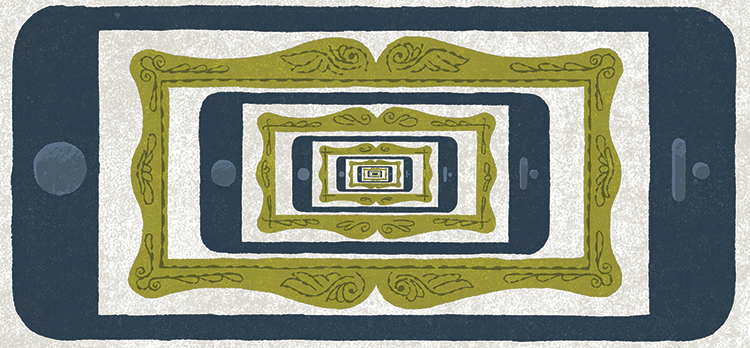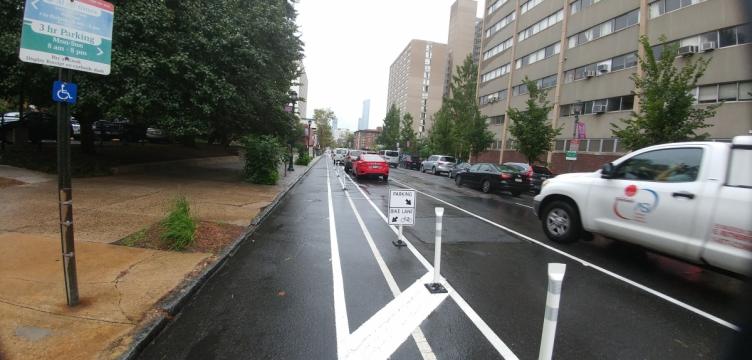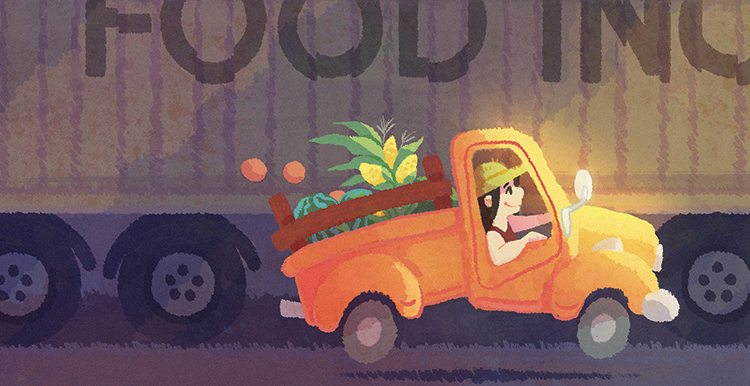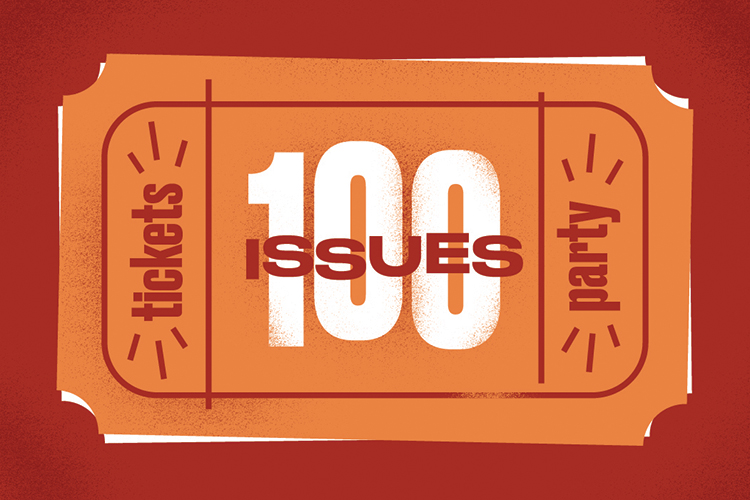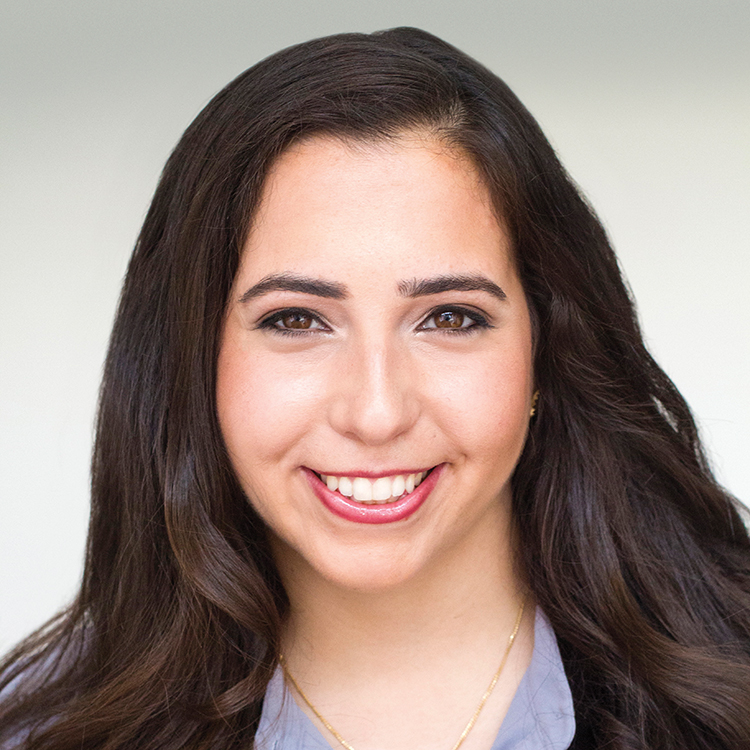A West Philly high school student reflects on how we curate our lives
Illustration by James Heimer
By Cameron Swann
The first time I realized that I could make my world beautiful was during a summer program from The School of the New York Times, where I spent two weeks looking at how the curation of art affects how we perceive the art itself. My teacher, Anthony Titus, taught me a lot during those two weeks, but one thing he said stood out: Everything is curated.
That really resonated with me, because in our society today we are so connected to social media—we see things, whether they are Facebook feeds or the walls of a gallery, in the way others want us to perceive the images. We are all trying to make our lives seem beautiful and interesting, even when they are not. I’d take pictures at events that would never happen again, places I wasn’t sure I would be able to visit again, things that I wanted to remember and brag about to the people I’d meet.
Instagram in particular, with its emphasis on pictures and not text, is curated, and people usually only take pictures of the aspects of life they think others will deem beautiful and opulent. When I was reflecting on that fact, I thought of ways to turn my daily life into something beautiful, worth showing. I kept thinking I had to memorialize a moment I’d only do once in my life. I thought the ordinary and routine in my life couldn’t be considered beautiful—until I experienced the Whitney Museum of American Art, also in New York City.
At the Whitney, the architecture and exhibits create a light-hearted and bright atmosphere that makes both the art and surrounding neighborhood look picturesque. The exhibit where I found the most beauty in the ordinary was “Where We Are,” which took pieces from the Whitney’s collection to show American lives from 1900 to 1960. It was broken up into sections by stanzas from the W. H. Auden poem “September 1, 1939.”
The poem and artwork showed everyday life and how things change dramatically whether you view an experience closely or at a distance. I found myself looking at a historical vantage point at the exhibit’s pieces about daily life from the Great Depression and World War II—when life wasn’t at its finest and happiest. And yet, there were beautiful creations from people documenting everyday lives, lives that were neither beautiful nor opulent in the way we measure on Instagram. One painting that stands out was “Gettin’ Religion” by Archibald J. Motley Jr.: It’s a colorful image of people in Harlem going home after a night on the town, dancing and playing music as others look on under the beautiful blue light of the moon.
It made me realize that in the turmoil and dismay of our lives today, we can still find the artistic in everyday moments, even in the dirty work of society. I plan to create beauty and happiness by taking photographs of the mundane—I hope others will create their own beauty as well.
Cameron Swann is a student at West Philadelphia’s Workshop School.

